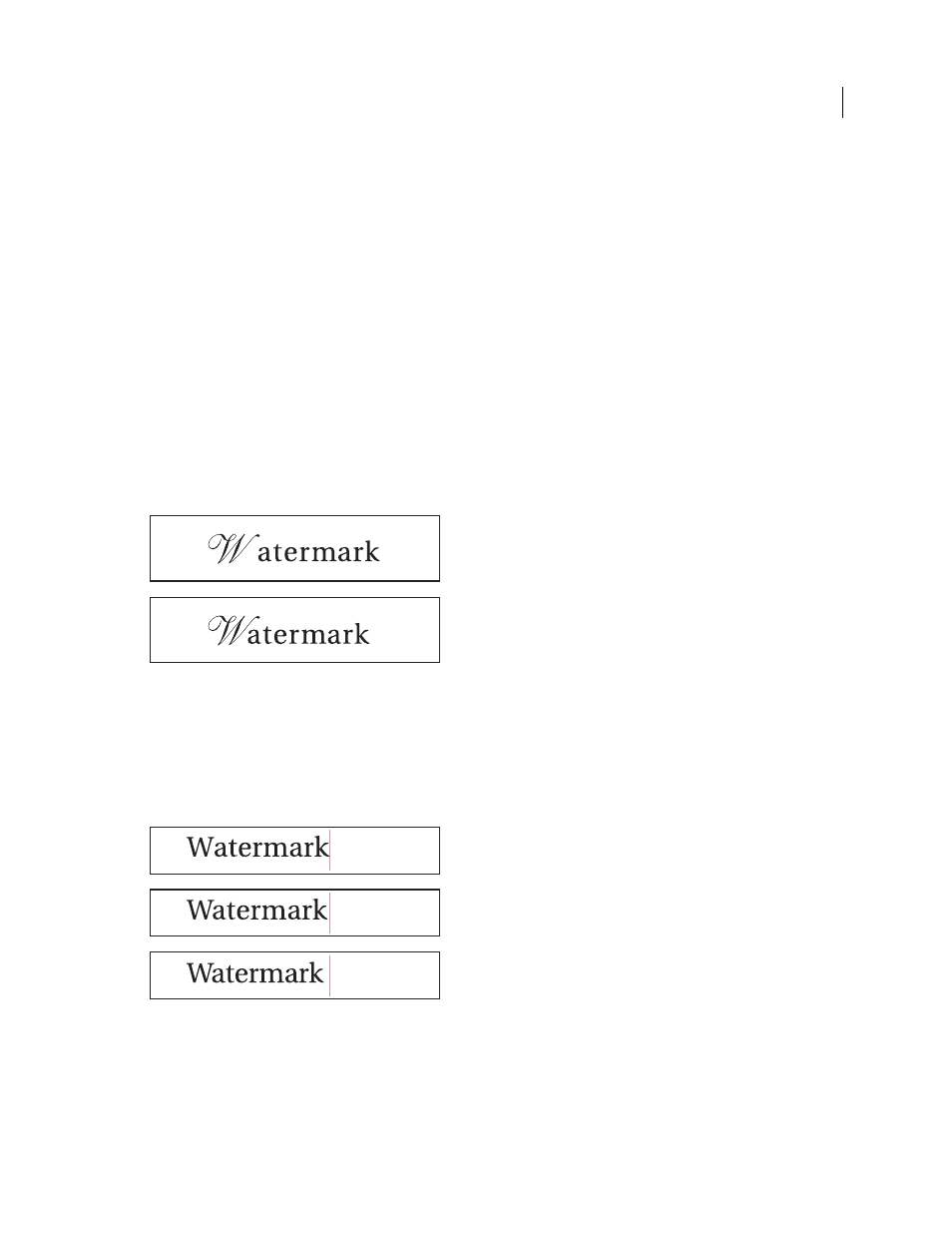Kerning and tracking, About kerning and tracking – Adobe InDesign CS5 User Manual
Page 257

251
USING INDESIGN
Typography
Last updated 11/16/2011
Kerning and tracking
About kerning and tracking
Kerning is the process of adding or subtracting space between specific pairs of characters. Tracking is the process of
loosening or tightening a block of text.
Types of kerning
You can automatically kern type using metrics kerning or optical kerning. Metrics kerning uses kern pairs, which are
included with most fonts. Kern pairs contain information about the spacing of specific pairs of letters. Some of these
are: LA, P., To, Tr, Ta, Tu, Te, Ty, Wa, WA, We, Wo, Ya, and Yo.
InDesign uses metrics kerning by default so that specific pairs are automatically kerned when you import or type text.
To disable metrics kerning, select "0".
Optical kerning adjusts the spacing between adjacent characters based on their shapes. Some fonts include robust
kern-pair specifications. However, when a font includes only minimal built-in kerning or none at all, or if you use two
different typefaces or sizes in one or more words on a line, you may want to use the optical kerning option.
Before applying the optical kerning option to the “W” and “a” pair (top), and after (bottom)
You can also use manual kerning, which is ideal for adjusting the space between two letters. Tracking and manual
kerning are cumulative, so you can first adjust individual pairs of letters, and then tighten or loosen a block of text
without affecting the relative kerning of the letter pairs.
Word kerning isn’t the same as the Word Spacing option in the Justification dialog box; word kerning changes the
kerning value only between a specific word’s first character and the word space preceding that character.
Kerning and tracking
A. Original B. Kerning applied between “W” and “a” C. Tracking applied
A
C
B